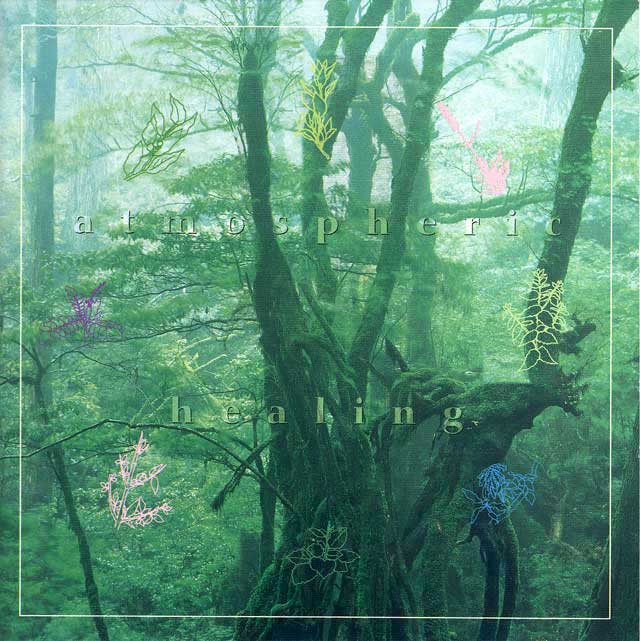
Sometimes, I feel like I may lead you even further down rabbit holes I’ve fallen into. Case in point: Dream Dolphin’s Atmospheric Healing. Released in 1996, on Harry Hosono’s FOA Records label, Atmospheric Healing began to stretch the label’s original concept of releasing “folk-oriented art” music into something they’d dub the “force of ambient”. Impossible to describe, the brain behind all of this, a very young woman “Noriko” (yes, another one…), did something completely unexpected in her career: she fused ideas from a prior generation’s “environmental music” and joined them with dance production, bringing the concept of “healing music” into the club dance floor atmosphere.
Where do I even begin with Dream Dolphin? Improbable as it seems, the Dream Dolphin story began at the young age of 11 years old, in Tokyo. This precocious child, a young Noriko, would quietly sing along to Italian music her parents loved to play at home. Partly therapeutic, partly escapism, Noriko would eventually discover that the only way to get over rampant bullying at her high school would be by tuning into radio stations playing dance music and channeling that voice into making her own music.

A voracious listener — from techno, house, to ambient — Noriko found that mindspace outlet in music allowed her to explore her own likes. From there on, as an artist, she adopted the name “Dream Dolphin” in homage to her decidedly earnest belief that in her prior life she was a dolphin. Mixing her animist, New Age, spirituality with preternatural talent to create music, somehow, a demo of Dolphins Talk To You got to Mr. Hosono and she was signed to FOA.
It’s infinitely hard to describe how in the span of months an artist who began her career making two wildly disparate things like techno that reaches for your heart as in Dolphins Talk To You and corny dance music for Disney(!) as in Donald Mania (For Sample), can in fact be one and the same person. Young enough to not entirely know what she was doing, and perhaps, creating music first for an audience of one, Dream Dolphin was creating her own style of music she’d dub “happy handbag music” — that is, fashionable dance music that suits those dancing with a handbag. If shoegaze was psychedelia staring at its feet, “handbag” was her pioneering transformation of Japanese New Age into navel-gazing dance music staring at its palm and fingers.
In swift succession Dream Dolphin would release an album in February, 1996 dubbed Love Eating Alien that’d find Noriko exploring high-speed techno. Then, just a month later, she’d release a mini-album 東京の民族音楽 (Tokyo Folk Music) exploring harder trance music. As prolific as one can image — then, just a month later another(!) album and extended single, Cosmic Blue and One Love, One Truth, took kaleidoscopic J-Pop into the realm of trip-hop, jungle, and rave-tastic happy hardcore.
Then, seemingly, dotting the final dot during this immensely prolific era was Dream Dolphin’s two-fer: an off-the-wall/bananas hardcore remix album of her club “hits” on Happy Do LuLu Dee! … while beginning her (comparatively) slow descent into ambient music by guesting on fellow label mate Yoshiaki Ochi’s Aqua. It was her time spent with Yoshiaki that would point to this not being the fitting end, that there was a more apt coda to this time.
In the span of four months, Noriko went from a recluse shut-in at home to appearing on radio and TV as the unlikely icon of Japanese ambient pop music and releasing music that put her at the forefront of Japan’s club culture. At just 17 years old, she took perhaps the longest, most fruitful five months of reflection. In those five months, Dream Dolphin took a step back from the European and American club music most thought she was in tune with and went deep into her own homeland’s folk and environmental music scene. Rather than run from her incomparable love for dolphins and the aquatic world, Noriko took sonic inspiration from them and ran them through her own interpretation of “healing music”.
In October, 1996 she’d release Atmospheric Healing with songs like “Stars・ 森のトンネルぬけて” and “Aroma & Music” signaling a sea change in her style. Gone was the distinctly high-tempo techno. In came the meditative danceable ambient music that seemed to pull samples from her environment, childhood, and god knows what other personal nostalgic ephemera. Here, Noriko’s vocal adopted a quieter, whispering quality that suited poetic lyricism that spoke more than sang. Kim Cascone would contribute just one remix, “L.E.A. (Mirror Codinale Mix) Remixed By The Heavenly Music Corporation (KIM Cascone)”, pointing to future dubby music yet to exist.

Exactly of its time but seriously out of time, Atmospheric Healing sounds like a voyage into the mind of someone sharing exactly what they wanted to hear. More learned artists can create music that’s perhaps technically more perfect but can they go places like “竹の道”, where freed from the tyranny of the clock, you just commune with the spirit of the atmosphere? Now multiply that eleven more times and you get exactly what this young, high school kid divined into Atmospheric Healing.
As for us, we should be thankful that the music of Hosono, Eno, Mr. Fingers, Yoshiaki and others, got to Noriko exactly at that right age one can use such influences to create their own wonders without grown pretense. Noriko dreamt that she could create healing dance music that sounded like it came from her nautical friends from way back when…and I gotta say, “she did it.” Here’s to another volume of sceneries, not songs.
